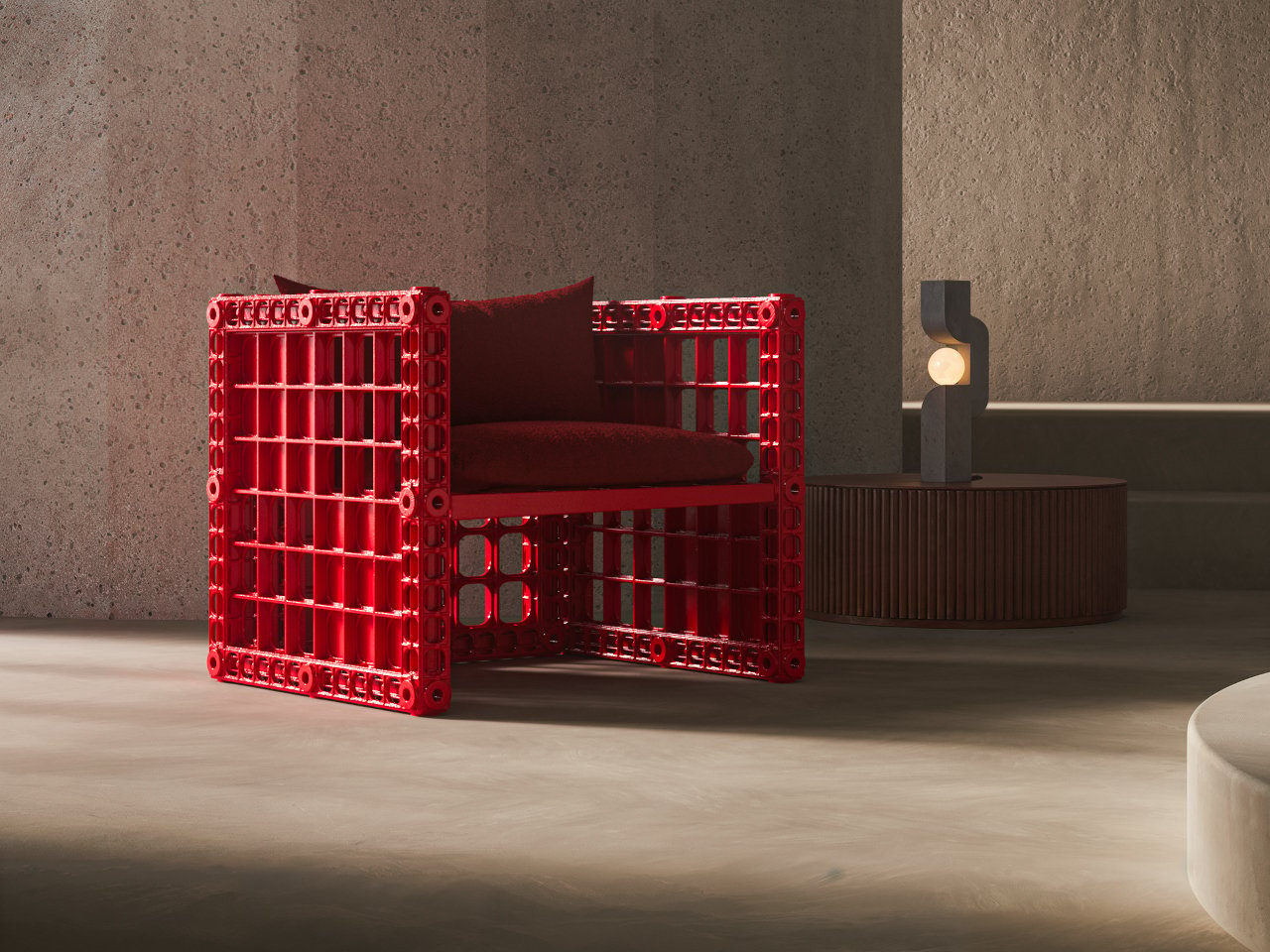Furniture designers have been exploring recycled materials for years, but the results often look strangely familiar. Reclaimed wood, repurposed metal, and recycled plastic tend to dominate, with the final pieces still rooted in the language of traditional craftsmanship. Even concrete, once an unconventional choice, now feels like part of the standard toolkit for sustainable design, leaving little room for surprise or genuine reinvention.
There are, however, endless objects scattered throughout our urban lives that rarely get a second thought. Most of these items are destined for the landfill: old tires, plastic crates, or those ubiquitous cement blocks that prop up construction sites. These objects are typically ignored in furniture design, dismissed as too rough or simply unrelated to interior decor. But what if these disregarded materials could be given a totally new role?
Designer: Marco Segovia
The Atypical Chair concept by Marco Segovia takes this question and runs with it, creating seating from elements that were never meant to support a person. Tires become makeshift cushions, bottle crates morph into surprisingly sturdy seats, and cement blocks double as legs or stabilizers. Each component carries visible traces of its previous life, resulting in a chair that feels more like a living collage of urban leftovers than a tidy piece of furniture.
This approach doesn’t simply recycle; it reimagines. There’s something audacious about using materials so far outside the furniture canon that their presence in a living room seems almost rebellious. The Atypical Chair doesn’t hide its origins: scratches, logos, and rough edges are left exposed, celebrating the journey of each discarded part. The chair doesn’t pretend to be anything but what it is, and that honesty brings a distinct kind of charm and personality.
Of course, there are trade-offs to such a radical design philosophy. Comfort and ergonomic support take a back seat to visual storytelling and resourcefulness. The ad hoc construction might not hold up for years of daily use, and the aesthetics can be polarizing, especially for those with a preference for minimalism or polish. These limitations are part of the story, reminding us that reusing the unexpected is often a creative experiment rather than a universal solution.
Still, concepts like the Atypical Chair spark new conversations around waste, utility, and the meaning of everyday objects. While it may never appear in a furniture showroom, its raw ingenuity points to a future where discarded things are not simply hidden away but transformed into something with new meaning and purpose.
The post Atypical Chair Concept Brings Unexpected Materials and Fresh Perspectives first appeared on Yanko Design.

